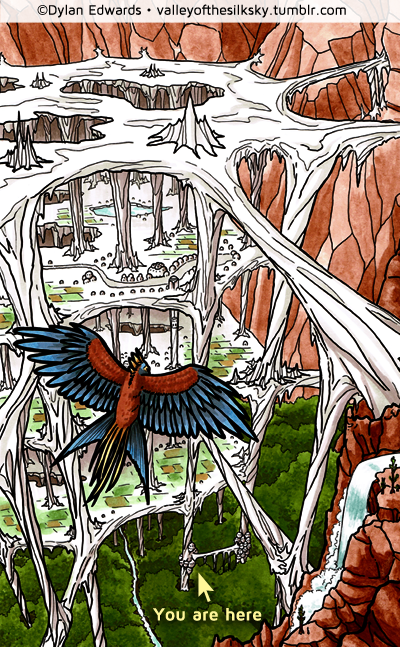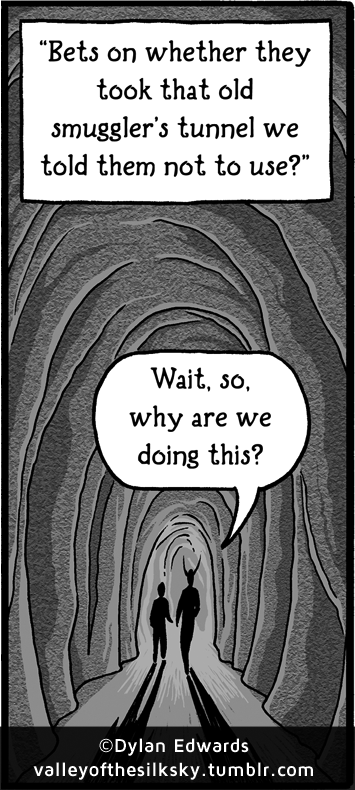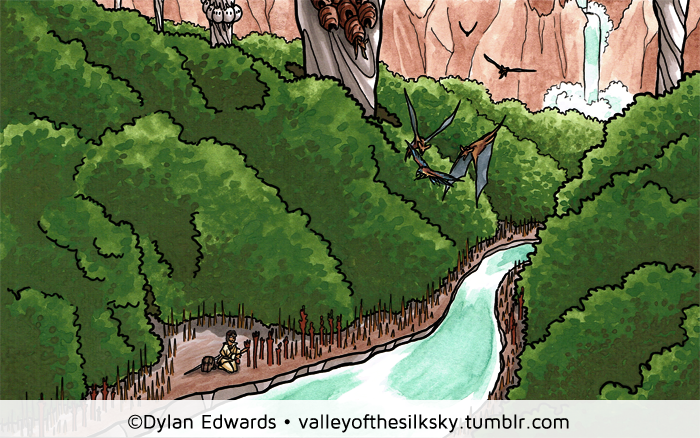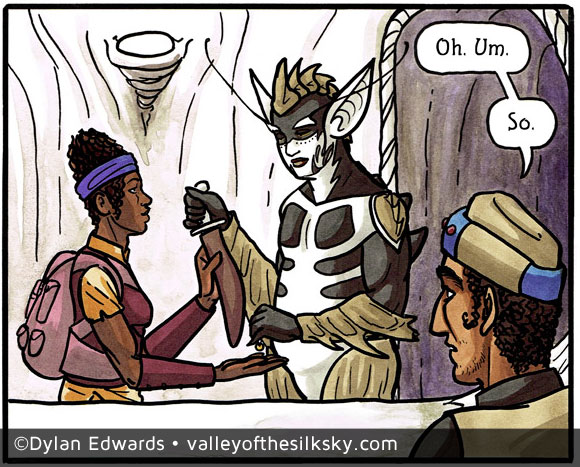 The web structure that spans almost the entire length and breadth of the valley is a country known as Pocalo.
The web structure that spans almost the entire length and breadth of the valley is a country known as Pocalo.
Each level of the web structure is a separate province, and each province has its own distinct flora and fauna, culture, dialect, food, and so forth. There are elevators connecting the provinces that allow for travel up and down.
Muru is the third tier of the lower provinces, making it the topmost province that is still in direct contact with the ground. Muru is a bit of a rough place to make a go of things, as there are a number of predators roaming about who view humans as a tasty snack. The porous nature of Muru’s borders means that people can come and go as they please, making it a desirable location for those who wish to operate outside the law.
Most settlements in Muru are built high off the ground due to the aforementioned predators and bandits. Because much of the interior is in the shadow cast by the upper provinces, almost all major settlements in Muru are found around the outer edges. The city the arrow is pointing to is Duvane, an outpost town that is not at all flashy, but a good spot to head to if you have goods to sell or trade.
Despite being rough and difficult to navigate, Muru forms a cornerstone of the Pocali economy. It is home to many rare flora and fauna which are used to make medicines. The majority of runners spend at least some of their time foraging in Muru.

 The country that occupies the Valley, Pocalo, is divided into provinces, and each province is stacked on top of the other. The massive structure that houses all these provinces was built up slowly over the course of thousands of years. For most of that time, the only way to get from one province to another was to take a long trek up or down the mountains that anchor the structure.
The country that occupies the Valley, Pocalo, is divided into provinces, and each province is stacked on top of the other. The massive structure that houses all these provinces was built up slowly over the course of thousands of years. For most of that time, the only way to get from one province to another was to take a long trek up or down the mountains that anchor the structure.
 The Daraz are indigenous to the Pocalo Valley, while humans wandered in a few thousand years ago. For the most part, things are pretty chill and symbiotic between the two species.
The Daraz are indigenous to the Pocalo Valley, while humans wandered in a few thousand years ago. For the most part, things are pretty chill and symbiotic between the two species.